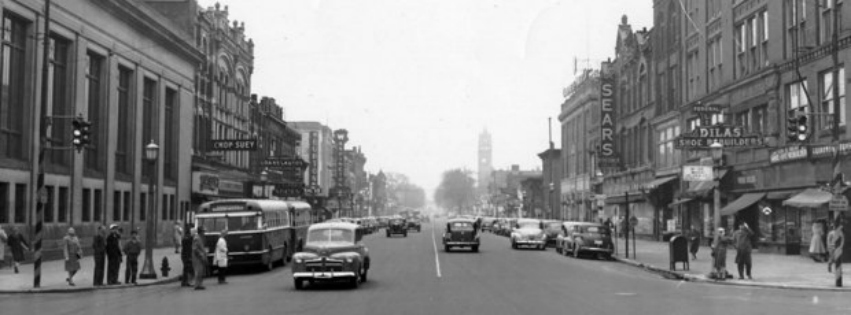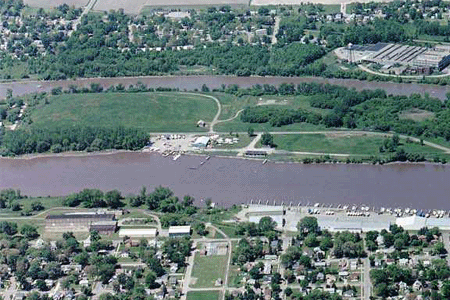
History of Bay County
Bay County lies along the Saginaw Bay on the central, eastern border of Michigan's Lower Peninsula, the center of a productive agricultural, fishing, and salt mine region. The hub of its manufacturing industries is Bay City, standing at the head of the Saginaw Bay.
The Michigan legislature created Bay County in 1857 from territory that today constitute Arenac County and parts of Midland and Saginaw counties. Bay County assumed its present proportions in 1883, including 443 square miles of land, and 30 miles of shore line. Many streams and two main rivers -- the Kawkawlin and Saginaw rivers -- may be found in Bay County, the latter being the largest river in the state.
Until the late seventeenth century, the Saginaw River Valley was inhabited by the Sauk Indians. Their territory stretched across the Lower Peninsula in a broad trend between the uplands of the Shiawassee River and north to Thunder Bay. Their warfare against other Michigan tribes brought down the combined tribes of Chippewas, Pottowattomies, and the six nations from New York. Warring wiped out the Sauks in the area of what is today known in Bay City at the Middle Grounds and farms in the Frankenlust Township Area, where many relics now may be found.
 In 1855, Johnathon Smith Barclay, Saginaw's representative in the state legislature, with the aid of Albert Miller and Daniel Burns introduced a bill to create Bay County. It was defeated by a narrow margin. A year later, the Honorable T. Jerome of Saginaw and Henry Ashman of Midland were elected to the state legislature from their counties and fought against the creation of Bay County. In spite of these efforts, the bill passed on February 17, 1857.
In 1855, Johnathon Smith Barclay, Saginaw's representative in the state legislature, with the aid of Albert Miller and Daniel Burns introduced a bill to create Bay County. It was defeated by a narrow margin. A year later, the Honorable T. Jerome of Saginaw and Henry Ashman of Midland were elected to the state legislature from their counties and fought against the creation of Bay County. In spite of these efforts, the bill passed on February 17, 1857.
The first registered land area in Bay County was to Stephan Riley. This was in 1819. However the city of Bay City did not settle until 1832, when Leon Trombley migrated from Detroit, Michigan. He had a commission to instruct the Indians in agricultural methods. Bay City was only a trading post until 1836.
In 1857, the original community name of "Lower Saginaw" was changed by legislative enactment to Bay City. Two years later, they incorporated Bay City as a village. The population at this time was 700. On May 2, 1859, the first election was held. Curtis Munger was elected village president. He received 92 votes. Charles C. Atwood was elected recorder, and John P. Cottrell treasurer. The first meeting was held May 6, 1859. John Woods was appointed Marshall, Henry Bradley as street commissioner, and Algerman Munger and William Daglish as assessors. Bay City was incorporated as a city in 1855, under a new charter. It elected a mayor and common council, Nathan B. Bradley, as manager.
The Bay County court house was a wooden building on Water Street, leased in 1858 from James Fraser for $200 per year. The county erected a county court house in 1867 at a cost of $30,000. Population at this time was 15,000. The rapid growth of the county found the court house inadequate. Many attempts to approve a new court house by the electors failed. However, in 1933 a new court house was constructed by a Bay City architect and contractor at the cost of $330,000.00. The corner-stone was laid April 13, 1933. The building was completed March 10 the following year. The Bay County Building is on the National Register of Historic Places.
Related Links